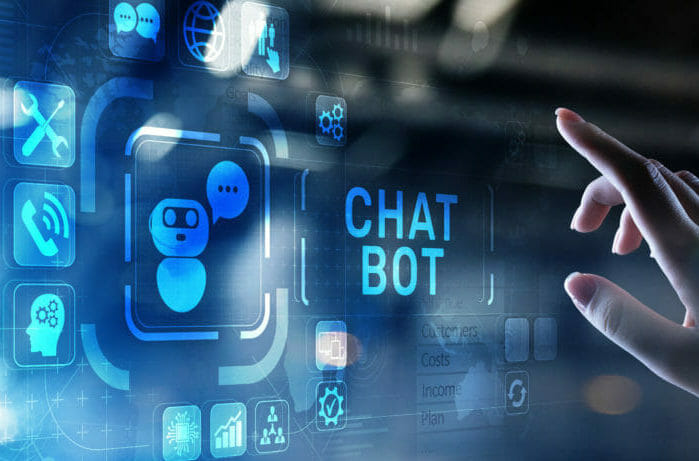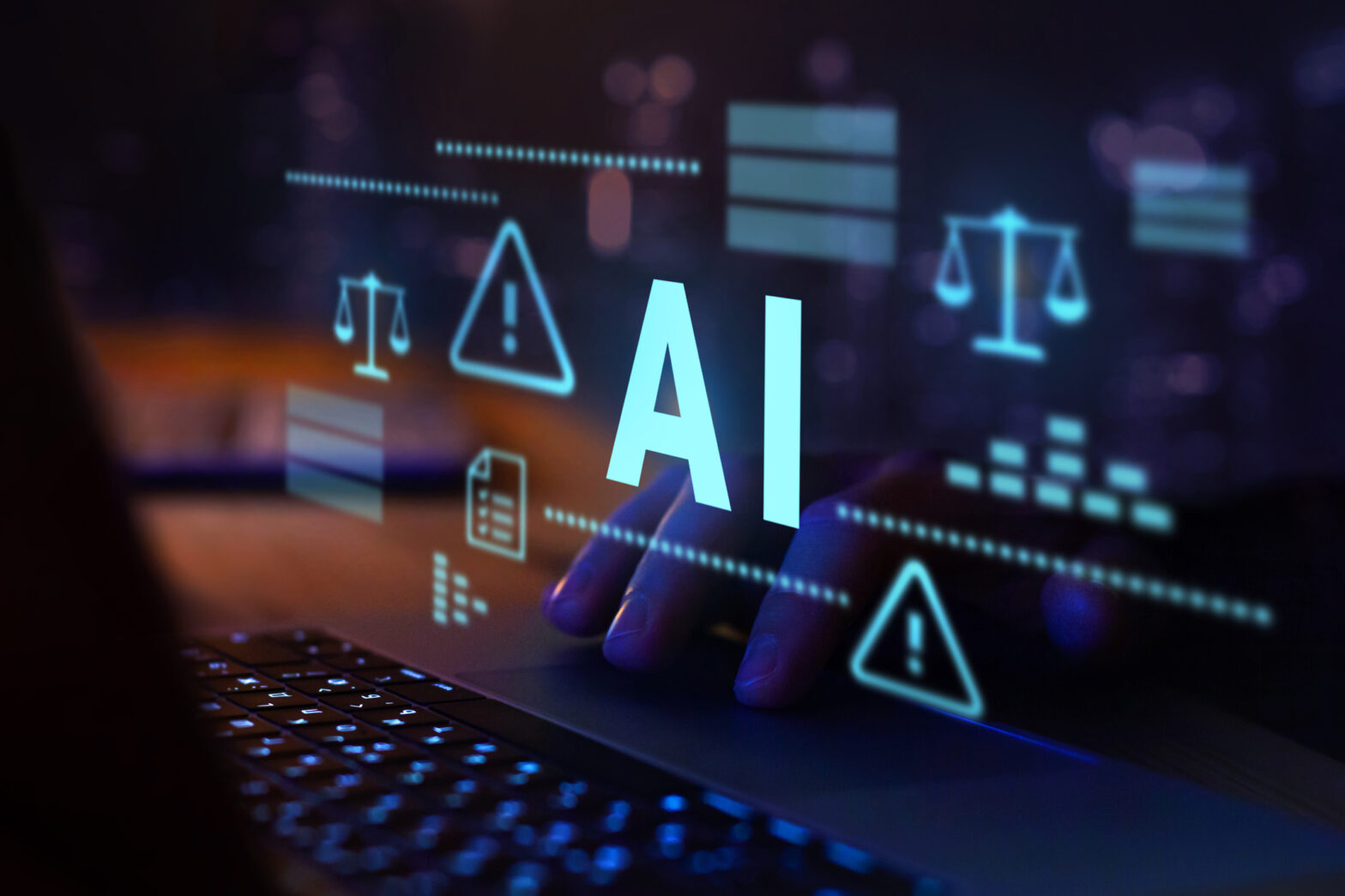The AI chatbot: almost every organisation should consider designing and deploying one to differentiate themselves to both their customers and employees.
Adopting an AI chatbot: why?
The main reason organisations should adopt AI chatbots is because they’re available 24/7. Customers and employees (perhaps on a work trip in another time zone) can get a response almost immediately and the technology enables consistent messaging with every interaction. If someone is going through a customer call centre, for example, there’s not always a consistent message being delivered for the brand.
Indeed, the main use case that Katie Gibbs, head of AI at BJSS — the privately-owned business and technology consultancy — has seen is where organisations use an AI chatbot to reduce the strain on their call centres.
She says: “Some of the clients we’re working with are actually using sentiment analysis throughout the conversation and that’s so that they can monitor how the customer is feeling. If the system detects that they’re becoming frustrated or angry, they will automatically hand them off to a human agent to enable a smooth transition and enable optimal customer experience.”
That’s the way organisations should work with AI and chatbots — it’s all about intelligent augmentation. This is the most important question that should be asked: How can we use AI to enhance the human skills that are available, rather than just replacing them?
A chatbot can be considered as an AI-powered system that simulates human conversation — it enables communication between humans and a machine via either text-based messages or voice commands
In order to achieve human conversation, natural language processing (NLP) must be applied. Without it, conversational AI is not possible. This is something the social media giant, Facebook has recognised. It has recently launched research proposals to develop its own natural language processing (NLP) technology. The applications of NLP range from Facebook making algorithmic recommendations for users, to voice assistants like Siri and Alexa, to chatbots helping customers solve problems with online retailers. “These research awards in NLP and machine translation were launched as a continuation of our long-term goal of supporting open research within the NLP community and strengthening collaboration between Facebook and academia,” wrote Facebook in a blog.
Implementing the AI chatbot
Just because it’s a shiny new technology it doesn’t mean a business should implement it. And, that — as is so often the case — has been the problem with implementing chatbots. Organisations were simply implementing a chatbot for the sake of having a chatbot, because they’d become really widespread and it was seen as the thing to do for any an innovative company.
The problem with this approach is that CTOs, far and wide, were implementing chatbots without thinking about the impact on user experience and actually understanding what they were trying to gain from it.
“Instead,” suggest Gibbs, “organisations should look at the opportunity or the pain point that they can address with an AI chatbot; for example, looking at areas that might be impacted like their net promoter scores, potential triggers for complaints or just a high volume of queries that are coming into the organisation, in order to really achieve long-term value.”
The majority of organisations should be developing back office chatbots — for the employee — to start with, in order to build up their confidence and capabilities before creating a consumer facing one (even though the back office chatbot has significant merits in terms of boosting employee satisfaction and productivity — just look at Avanade’s deployment of Carrie, a security chatbot for Carlsberg, as an example of this.)
Under the AI umbrella: Machine learning, natural language and computer vision — key to enhancing chatbot capabilities
Bringing the brand to life
Improving customer and employee experience should be a top priority for any board or executive team, and AI chatbots can facilitate this — personalisation can be used to bring a brand to life for any customer in a very personal way, rather than having generic responses all the time.
Regarding personalisation, Marcel Hollerbach — CMO at Productsup — explains that “voice assistants and chatbots can use data (search history, website visits, in-store visits) to anticipate customer needs and offer them exactly what they’re looking for. They can answer customer enquiries and learn from past behaviour in order to make solid recommendations.”
Gibbs points to an organisation that is doing this really well:
• Kiehl’s, the cosmetic company, has got a chatbot that takes into consideration your age, your skin type and has an interaction with you in order to make personalised recommendations. “This is a really great example of designing a chatbot based on user needs, because it can be pretty daunting browsing all these different products on a website and not being sure which ones are best suited for your skin,” she explains.
Training: key to chatbot success
Trained a chatbot well is key to ensuring its success once the technology is deployed. Whosever is leading the project needs to test it with users, in order to train the chatbot as much as possible, to enable maximum intent recognition.
The reason, according to Gibbs, that a lot of companies get stuck in proof-of-concept with chatbots is because they try to keep the chatbot within the people who are designing and delivering it, rather than engaging the end users to get as many training phrases as possible.
Examples of chatbot success
There are some really great examples of consumer chatbots in the marketplace:
• RBS and NatWest’s Cora chatbot was developed to improve customer service. This includes anything to do with FAQs or ordering a direct debit card, for example. It took them a long time to get it right, but it’s been trained really well now and it’s got really high accuracy levels.
• Spotify has got a chatbot system where users can create playlists via the chatbot. Users can put in musical preferences and the bot recommends songs based on preference. And then you can share your different songs and your playlist with your friends and contacts all within the chatbot. So they’re really looking at how they can engage people
• Johnson and Johnson’s baby centre has got a bot that asks questions in order to provide personalised advice and targeted content. For example, if a parent is asking for advice on weaning, then the bot will provide advice and the things they should look out for in potential products that might help ease their baby with that transition.
When chatbots go wrong
Chatbots can go wrong and fail quite often. Microsoft’s chatbot, Tay, is the infamous example. The internet giant gave Tay its own Twitter account and the public were allowed to interact with it — within 24 hours it turned into a racist troll that was very keen on conspiracy theories. This is a really great example of where sequence learning can be applied: businesses need to be able to see what people are inputting into the system and monitor how the chatbot is adapting to it.
There are also a lot of privacy concerns around voice assistants recently. “Alexa and Google have admitted that they’re recording snippets of conversation that are being reviewed by contractors in order to train their natural language systems,” continues Gibbs. That’s another real concern of where chatbots can go wrong: users need to know how their data is being collected to ensure trust.
“At the moment, there’s quite a large violation of my privacy” — Gibbs
A top priority for CTOs and tech leaders
Adopting an AI chatbot should be viewed as a top priority, because it represents a quick win — it takes, on average, three months to deliver a chatbot into production, be that customer facing or employee, back office based.
Tom Hebner, head of product innovation, voice technology and AI at Nuance Communications agrees and says that “as CTOs need to guide their companies though the digital transformation its key that the overall strategy drives all technology decision, and that includes the best chatbots. Organisations need a future-proof contact centre designed to deliver intelligent engagements.
“As we enter the so-called fourth industrial revolution, AI will fundamentally change how we do business and CTOs must be privy to this, re-imagining the way we work – with technology and humans working closer than ever before.”
Chatbots — key in improving customer engagement, retention and experience
Good CX requires instant information
A successful chatbot can provide instant information to the end user (whether that’s the consumer or employee).
Everything from internal employees wanting to reset their passwords, through to customers wanting to receive personalised product recommendations and automating FAQs, if they can do that with a chatbot, it’s going to drive huge efficiencies and improve experience.
As chatbots continue to infiltrate the market with better designs, there’s a real opportunity to engage with end users in a new, more effective way.
“With customers increasingly seeking to ‘self-help’ through digital channels, smarter virtual assistants means better customer service and faster resolutions for everyone,” confirms Hebner.
“Customer expectations continue to rise rapidly, and there’s no sign of that slowing down. They’re going to continue challenging companies to give them better experiences and make every interaction effortless.”
Related articles
The history of the chatbot: Where it was and where it’s going
Chatbots and human customer services; does artificial intelligence replace or complement humans?
Chatbots need more than AI to have a good conversation
A CIO’s guide to chatbots: Everything you need to know
Chatbots can only reach their potential through instant-access data
Automated chatbots don’t chat, they debate?
The top 10 things businesses must consider when adopting chatbot technology







